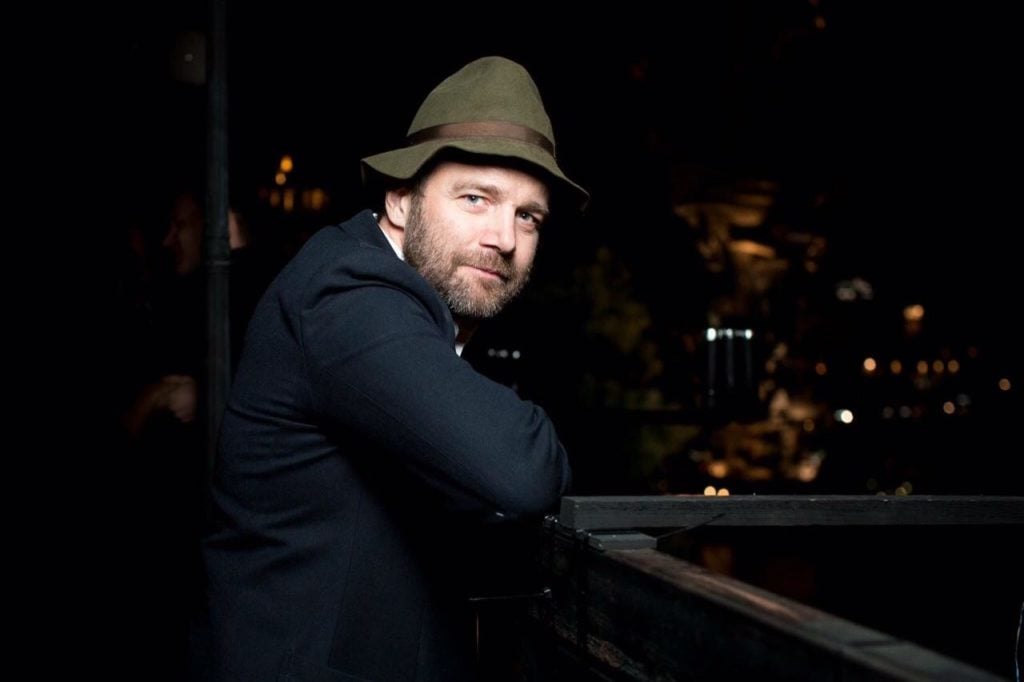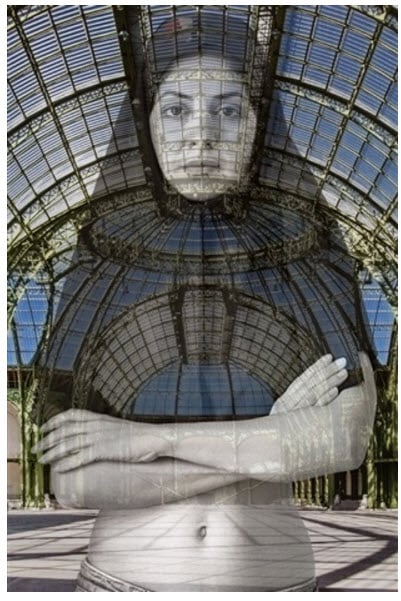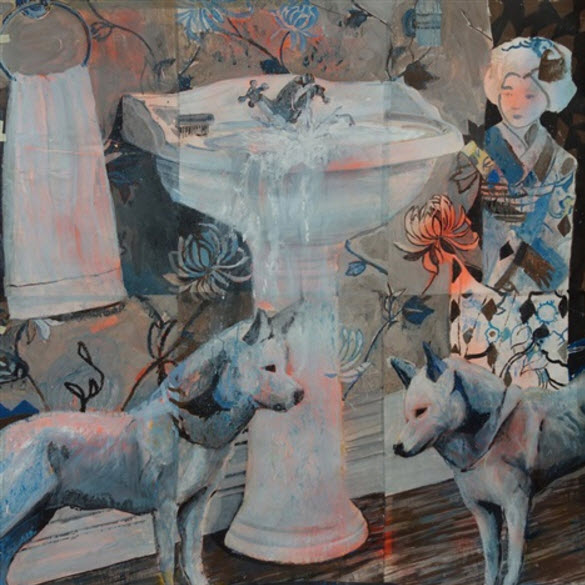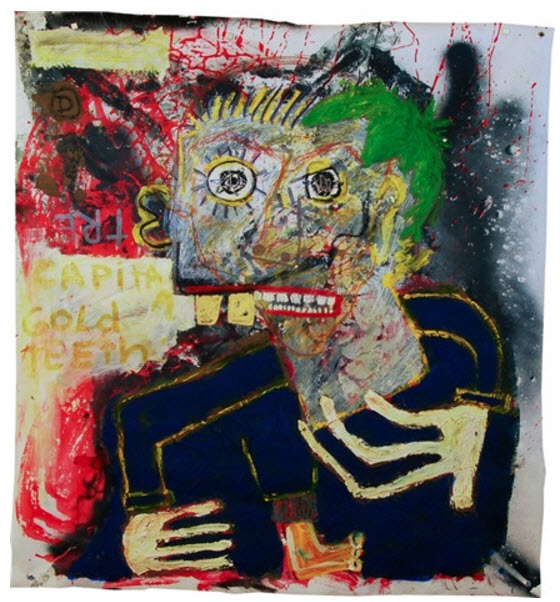People
artnet Asks: Bertrand Scholler of 55 Bellechasse Gallery
Their exhibition at Contemporary Istanbul opens today.

Their exhibition at Contemporary Istanbul opens today.

Artnet Galleries Team

55 Bellechasse has established itself as a unique gallery destination for collectors in Paris. Exhibiting a wide range of artists and styles, its program has revealed a penchant for poltically minded and socially relevant figurative art, including work by Niloufar Banisadr, Pascal Vochelet, and David Ramirez Gomez.
Here, founder Bertrand Scholler explains the winding history that lead him to dealing, and what we can expect from 55 Bellechasse’s next major outing at Istanbul Contemporary. Not to missed, the international fair opens today and runs through September 17.
Tell us about your background in art.
My background in art has mostly been as a “seasonal collector” and being curious about all forms of arts, from everywhere and any time in history. Indeed, when I was younger, I was frequently visiting museums, antique shops, or going at local auctions with my parents. When I was older and started to gain some money, I did buy few pieces and it became like a drug—especially after I found in the streets dozens of paintings and art objects.
All were lying in piles on a dirty floor, obviously waiting for the garbage truck. Wisely, I immediately took some, came back twice before all was cleaned up by those in charge of keeping Paris’ streets clean, even from art… Some of the pieces even had footprints on them.
Strangely, I have always known I could one day make the jump to become an art dealer—I had the “virus.”

Niloufar Banisadr, Miss Univers (2015). Courtesy of 55 Bellechasse.
What lead to the founding of your gallery, 55 Bellechasse?
It was the conjunction of few events: I met Niloufar Banisadr, she was the passenger next seat to mine in a flight from Istanbul to Paris. A few weeks later, she introduced me to her numerous bodies of works. I was fascinated. It had to be presented to the public.
I had a well-located space in the 7th arrondissement of Paris—a space that could become an art gallery. Indeed, it was my office: I decorated it with pieces from my collection and frequently people were knocking at the door to learn about the prices.
A few friends were ready to be part of the adventure, especially Hans Mautner, Freddie and Frederic Chesnais, Jacques Attali, Jerzy Ciszewski and Francois Sarkozy, and a few artists I knew and collected were willing to join from day one, even though I had no background and was a novice in the field. Diadji Diop and Pascal Vochelet were the most prominent, being already in the market for a while. Niloufar Banisadr was the most difficult to convince, and anybody who knows her works can understand why.
Lastly, I could afford it, at least for a certain period of time—which has been extended thanks to our growing sales and the strong and generous involvement of both Victoria and Hans Mautner.

Pascal Vochelet, Les distraits (2016). Courtesy of 55 Bellechasse.
What type of art does your gallery focus on?
We do not really focus on any kind of art—we focus on artists. The purpose of the gallery is to promote artists and sometimes, hopefully as often as possible, what they do is immediately successful commercially with 55 Bellechasse, but there are no guarantees, even for the pieces we consider strong.
Whatever happens, it is a long-term partnership, and there are many ways to measure the ongoing success. Most important being that both the artist and the gallery can survive periods with low levels of sales or commissioned works.
As I am a key decision-maker in the artistic choices of 55Bellechasse, I always ask myself during in the selection process of an artist: If I hang one of his “important” pieces on the gallery walls,
Would I purchase it for myself if I could afford it?
Would I be proud of it without any explanation or a visible signature?
Would the emotion last, and does it bring enough “digested meaning” for the piece to be worth coming back to years later, or be given to a museum?
Tell us about your first show. Was there a particular moment, good or bad, that was memorable for you?
The first show was a retrospective of Niloufar Banisadr’s works. We had been working to prepare it with the artist and the gallery team for weeks, sometime through nights and days.
The best memory is a phone call: Sarah Doraghi contacted us to ask if they could come and do a report for national television. I wasn’t sure if it was a joke. But I told Niloufar to come at the agreed time few days later.
Right on time, a car and a truck with a crew of five people arrived at the gallery. They stayed about five hours straight to shoot the images and interviews they were looking for, and then they asked the artist to visit them a few days later at the TV headquarters.
When it came on television, it was so emotional. I had told many members of my family, friends, and contacts to have a look. It exceeded all expectations: a full seven minutes on the most successful French morning show, TeleMatin on France 2, watched daily by millions of viewers.
The following days, each morning there were up to 100 people waiting in front of the gallery.

David Ramirez Gomez. Courtesy of 55 Bellechasse.
What was the most difficult artwork to part with? Why?
I have no more willingness to keep art for me. I have been a collector for many years, and now my job is to sell. But, there are pieces I only show to serious collectors, and there are pieces that are not yet in the market.
Then is there a piece that now I would like not to have sold: yes. But at that time, I was very happy to sell to Hans Mautner a painting by David Ramirez-Gomez named Dinamarka. And as it is still with him, in his office in Florida, I have no regret. Nevertheless, I think this is a very unique piece of art, as well as Puta I, another piece by David, which is now with Ziel Feldman.
What is your next important show? Tell us why we should come.
It is Contemporary Istanbul, and you will come because it is always fresh, with a lot of galleries with interesting ideas on how to curate the show and involve collectors.
What advice can you give to a first-time collector?
Buy with your heart, asking yourself a few questions:
Will I be proud to show it to my family and friends?
Do I have an emotional reaction before it, and one that could last a while?
If I have to sell it one day, how would I feel to admit the price I paid for it?
Consider your answers, and the decision should become obvious.
The artnet Gallery Network is a community of the world’s leading galleries offering artworks by today’s most collected artists. Learn more about becoming a member here, or explore our member galleries here.